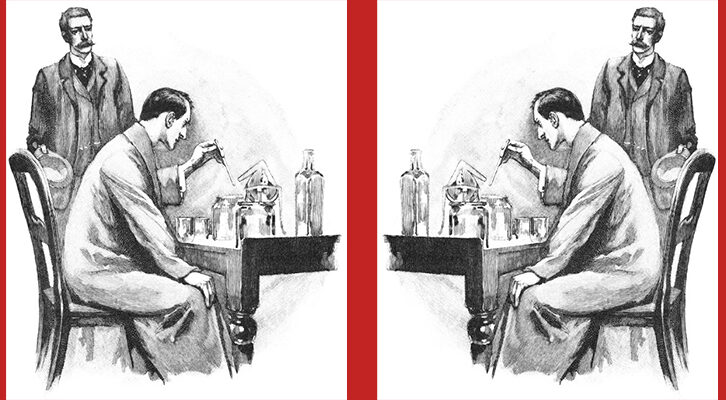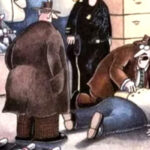
The Year in Single Women
And Why the Woman's Quest May Succeed the Marriage Plot
Loving another is easy; loving yourself is hard: these are the words that occurred to me while reading five books on single women that were published in 2016. It’s funny, though, that this phrase should cross my mind as the books in question concerned women who didn’t have spouses or partners. To some, this might indicate that loving another, or finding another to love who also loves you back, is the hard part. But as these books each display, self-love is often the most difficult sort to develop.
Nominally, these books, all written by women who are single or have spent a majority of their adult life single, were markedly different. Olivia Laing’s The Lonely City offers up art as a balm to soothe loneliness. Rebecca Traister’s All the Single Ladies, billed as a movement-invigorating book, retraces the history of single women in American politics. Kate Bolick’s Spinster, reissued in paperback this April, is a cri de coeur in which Bolick investigates the lives of her role models, both fictional and factual. Vivian Gornick’s The Odd Woman and the City, the paperback version of which was published in May, is perhaps the most literary of the bunch: an ode to walking the streets of New York as a single woman in the middle of life. And Emily Witt’s essay collection Future Sex is a dispatch from the trenches of female singledom, a mix of memoir and reportage on adventures in the 21st-century sexual vanguard.
Still, a unifying force is at work behind these women’s books. There is, of course, demographics—all of these women are white, and all have spent a good deal of time in New York City. But an equally important similarity shared among these writers is their desire for self-knowledge and personal development: they want to know themselves as individuals and thereby love themselves independently. In The Odd Woman and the City, Vivian Gornick, writes of a “useful solitude” in which “I [italics hers] am there, keeping myself imaginative company, breathing life into the silence, filling rooms with proof of my own sentient being.” But learning to be with herself, a first step towards true self-acceptance, proves a difficult task for Gornick, whose friend tells her if she doesn’t stop dwelling in useless loneliness, she’ll be “her mother’s daughter forever.” Emily Witt also grapples with being alone, and turns inward in self-examination. At the end of her exploration of contemporary sexual subcultures, Witt writes, “I had wanted to seek out a higher principle of life than search for mere contentment . . . even if it meant delving into ugliness, contracting an STD, or lifting my shirt to entice someone jerking off over the Internet.” And in the course of writing her book, Witt grew to understand “the fabrication” of her monogamy-minded sexuality. Olivia Laing takes her own loneliness and attempts to transmute it into a social critique, paying special attention to how the technologies of social media alienate us. At the start of The Lonely City, Laing moves across the Atlantic for love, only to find that her beau is no longer interested. Having few other contacts in her new city, she finds herself frequently alone, spending “increasing hours sprawled on the orange couch in my apartment, my laptop propped against my legs, sometimes writing emails or talking on Skype, but more often just prowling the endless chambers of the Internet.”
It should be noted, though, that female singleness is not exactly a revolutionary concept, or as novel as some would like to make it seem. As Traister shows in her book (in the somewhat clunkily titled chapter “Single Women Have Often Made History”), single women, though not as statistically prevalent in the past, have often left a remarkable impression on American society—Susan B. Anthony, for example. And in the late nineteenth and early twentieth century, popular culture witnessed a rise in writing about a seemingly new kind of life form: “the single girl.” Women had been granted more freedom and independence than ever before, and mass culture took notice. In 1898, writer Neith Boyce launched a Vogue column called “The Bachelor Girl.” As a single woman and self-described “bachelor,” she was on a mission to “convince the world that she is possible.” Along with women like Wellesley College president Alice Freeman Palmer and feminist lecturer Winnifred Harper Cooley, Boyce was one of a fair number of women who would be called “New Women” during this time.
Women who fell into this category were economically independent, often lived in cities, and held jobs. As scholar Jean V. Matthews puts it in The Rise of the New Woman : The Women’s Movement in America, 1875-1930, the New Woman, a term which was coined in the 1890s, was “young, well educated, probably a college graduate, independent of spirit, highly competent, and physically strong and fearless.” At the same time, this new breed of young, independent women called for greater sexual autonomy, hoping to free themselves of the shackles of Victorian modesty. Economic autonomy also influenced domestic life by making divorce a more feasible option for women; from 1870 to 1920, divorces increased 15 times over, and by 1924, one in seven marriages ended in divorce.
These developments were met with a mixed reception. Criticism began to mount as more and more New Women appeared in the workplace and the Great Depression rendered the American economy feeble. Some leading pundits, like Anthony Ludovici, reproached women for working, arguing they should step down from their professional roles and return to the home rather than take jobs from their male counterparts. As historian Nancy Cott writes in the conclusion of The Groundings of Modern Feminism, “No question feminism came under heavy scrutiny—and fire—by the end of the 1920s” from conservative reactionaries. For anti-feminists, according to Cott, “feminism looked too fearsomely futuristic, projecting a world in which women’s self-seeking destroyed gender assignment, family unity, kinship pods, social cohesion, and human happiness.”
But then, of course, this wave of the single woman crashed, and popular culture retreated (mostly) into more domestic (and dependent) representations of women in the mid-twentieth century. Though this time period was mostly dominated by depictions of married or to-be-married women, there were two notable instances of single-woman talk in the mass culture of the mid- to late-twentieth century: The Mary Tyler Moore Show and Helen Gurley Brown’s Sex and the Single Girl. In the latter, the Cosmopolitan editor Brown writes that the single woman is “far from being a creature to be pitied and patronized”; rather, she is “emerging as the newest glamour girl of our times.”
And eventually progressive social change, propelled by the identity-based equality movements of the late 1960s and 1970’s, took hold and the number of single women began to once again rise, in terms of both statistics and social acceptance. And as Traister points out, the 1990s saw another wave of single-women talk, which was dubbed “chick lit.” Helen Fielding’s Bridget Jones Diary and HBO’s Sex and the City are perhaps the preeminent examples of this subgenre. Today, the single woman is more prevalent than ever—in 2009, there were more unmarried women than married women in America for the first time in the country’s history.
And these societal shifts naturally affected the way in which narratives of marriage and singleness were written, in both fiction and reportage. As Vivian Gornick puts it in her seminal 1997 essay “The End of the Novel of Love,” the novel’s love-marriage narrative has shrunken from an earth-shaking, life-shattering force to a “small good thing” in contemporary society. During her childhood in the Bronx, Gornick writes, “we lived in a culture soaked through with the conviction that love had transforming powers: to know passion was to break the bonds of the frightened, ignorant self.” However, as an adult, she finds herself disappointed in the love-marriage narrative. “It’s the wrong catalyst,” she writes. “It doesn’t complicate the issue, it reduces it.” According to Gornick, the reason behind this shift is largely sociohistorical: today, divorcing can be easier than tying the knot. Marriage, therefore, no longer holds the metaphorical weight it once did. (Gornick’s essay is primarily concerned with fiction; however, as Gornick herself suggests, the boundary between fictional realities and actuality is porous: fiction influences life and life influences fiction. It is useful to adopt this position—the one feminists like Rebecca Solnit have inhabited for years—when examining the nonfiction and memoiristic narratives women published in 2016.)
Though I buy her main idea, Gornick’s essay troubles me for three reasons. First, it uses a single book (Jane Smiley’s Age of Grief) to prove her grandiose point about that we have reached the end of the novel of love. Second, it conflates love and marriage (the two don’t always, shouldn’t always, go hand in hand). And third, it doesn’t provide an alternative governing narrative to the marriage plot. The anxiety that this last point can cause is manifest in the single woman books of the last two years. Though women are now staying single longer than ever, marriage is still seen as a major milestone in the stories many women tell themselves. Emily Witt writes that marriage seemed to her like a “default denouement,” a “destiny rather than a choice.” Yet her unmarried state made her feel as if she lacked something.
But this feeling of lack prompts something interesting to happen in Future Sex: Witt sets out on an adventure. She explores orgasmic meditation, among other things, in San Francisco. Similarly, it is the lack of love that drives Olivia Laing to archives, to seek out the art of Andy Warhol, David Wojnarowicz, and Edward Hopper. The absence of another to love and be loved by in return is the impulse that drives Vivian Gornick to stroll the streets and walk among the crowd, experiencing the “exquisite intervention of strangers.” It is also the impulse that propels Kate Bolick to literary exploration and small adventures, like driving five hours to her hometown upon learning that it had (temporarily) been a home to Edna St Vincent Millay—who, along with the Vogue columnist Neith Boyce and a few other women, comprises Bolick’s group of “spiritual awakeners.” And it even compels Traister, who has since married but spent much of her adult life single, to interview other single women, both those similar to her and those unlike her.
Essentially, each of these women sets off on a quest. And while the quest narrative is one of the oldest known to humankind (think Gilgamesh), it’s not a narrative whose driving character is usually female. There have been other notable exceptions to this, especially in recent years—I’m thinking of messy female characters such as Cheryl Strayed in Wild, in particular. But it nevertheless seems remarkable that so many women published books about their independent adventures over the past two years. And furthermore, what’s notable about these women’s stories is that their explorations engage with external realities and public spaces (a walk through Manahattan, for example) as well as internal truths—the path toward self-discovery, the realization that one’s own self is enough. The internal journeys of these women bring me back to my original point: these books on single women are ultimately about self-love and self-actualization. Fortunately, they stay far away from the stale and empty language of the self-help genre.
I would therefore like to offer up this narrative—the Woman’s Quest—as the inheritor of the marriage plot’s primacy, a solution to the problem identified but left unanswered by Gornick in “The End of the Novel of Love.” It’s clear that the single woman’s journey toward loving herself is here to stay.
Tara Wanda Merrigan
Originally from Boston, Tara Wanda Merrigan is a writer living in New York. Her writing has appeared in Literary Hub and The Rumpus, and on the websites of The Baffler and T Magazine.



















